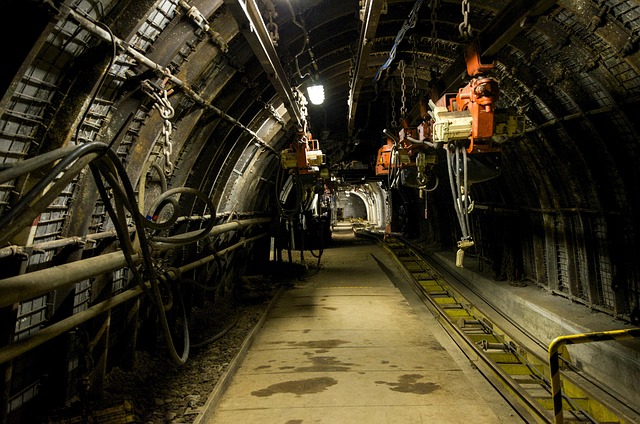Non-destructive potholing is a modern, safe, and efficient method for inspecting underground structures without causing damage. Using advanced tools like GPR or infrared cameras, it identifies issues early, reducing costs, ensuring proactive maintenance, and extending infrastructure lifespan compared to traditional methods. This technique is crucial for precise utility verification before excavation, minimizing disruption and improving project success. As a game-changer in the construction industry, non-destructive potholing enhances accuracy, safety, and efficiency, fostering a more sustainable environment through faster turnaround times, enhanced navigation, and critical utility information.
Precision utility verification through non-destructive potholing is transforming construction and maintenance practices. This gentle, yet powerful quality assurance method ensures critical infrastructure integrity without damage or disruption.
This article explores the evolving role of precision utility verification in streamlining construction projects and improving maintenance efficiency. We’ll delve into the intricacies of non-destructive potholing techniques, analyze real-world case studies showcasing their successful implementation, and highlight the tangible benefits for both industries.
Understanding Non-Destructive Potholing: A Gentle Approach to Quality Assurance
Non-destructive potholing is a gentle and safe method used in construction and maintenance to assess underground structures without causing damage. This technique is particularly valuable for quality assurance, allowing professionals to inspect pipes, foundations, and other subterranean elements without invasive excavation. By using specialized equipment like ground penetration radar (GPR) or infrared cameras, technicians can detect anomalies, cracks, corrosion, or leaks hidden beneath the surface.
This approach offers numerous advantages over traditional destructive methods. It minimizes disruption to existing structures, preserves the integrity of materials, and reduces costs associated with repair and replacement. Non-destructive potholing enables proactive maintenance by providing early indications of potential issues, ensuring the longevity and safety of critical infrastructure.
The Role of Precision Utility Verification in Construction Projects
Precision utility verification plays a pivotal role in modern construction projects, ensuring safety, efficiency, and long-term sustainability. It involves utilizing advanced techniques like non-destructive potholing to accurately identify and map underground utilities before any excavation begins. This proactive approach minimizes the risk of damaging critical infrastructure, such as water pipes, gas lines, and electrical cables, which can cause costly delays and disruptions.
By employing precision utility verification, construction teams can gain valuable insights into the layout and condition of buried utilities. Non-destructive potholing techniques enable them to assess potential issues without disturbing the ground, thus saving time and resources compared to traditional methods. This data is instrumental in informed decision-making, precise planning, and efficient maintenance, ultimately contributing to the success and longevity of construction projects.
Enhancing Maintenance Efficiency with Advanced Potholing Techniques
In the realm of construction and maintenance, enhancing efficiency is paramount to stay ahead in a competitive market. One such game-changer is the adoption of advanced potholing techniques, particularly non-destructive potholing. This innovative approach allows for precise utility verification without causing damage to the surrounding infrastructure, thereby reducing costs and minimizing disruptions. By employing cutting-edge technology, maintenance crews can efficiently identify and map underground utilities, ensuring safe and informed excavation.
Non-destructive potholing offers a myriad of benefits, including faster turnaround times and improved accuracy. It enables professionals to navigate complex labyrinthine landscapes with ease, uncovering critical information about pipes, cables, and other utilities. This advanced method is a testament to how technology can revolutionize maintenance practices, fostering a more efficient, safe, and sustainable construction and maintenance environment.
Case Studies: Successful Implementation and Benefits in Real-World Scenarios
In real-world scenarios, precision utility verification through non-destructive potholing has proven to be a game-changer for construction and maintenance projects. Case studies from major urban areas highlight successful implementations where this technique was instrumental in identifying and mapping underground utilities with remarkable accuracy. By avoiding traditional destructive methods, potholing reduces costs, minimizes disruptions, and enhances safety on site.
For instance, a recent project in a bustling metropolis involved rehabilitating an aging water main without interfering with the dense network of underground utilities nearby. The use of advanced non-destructive potholing equipment enabled accurate location and documentation of gas, electric, and other critical services, ensuring a smooth and efficient construction process. This approach not only preserved the integrity of existing infrastructure but also facilitated better project planning and coordination among various stakeholders.
Precision utility verification, particularly through advanced non-destructive potholing techniques, emerges as a game-changer in construction and maintenance. By employing gentle, yet effective methods, professionals can ensure quality assurance while minimizing disruption to the surrounding environment. The benefits extend beyond cost savings; efficient maintenance routines, enhanced safety, and reduced project delays are tangible outcomes. As demonstrated through real-world case studies, adopting these innovative practices is not just desirable but essential for modern construction and maintenance operations.
